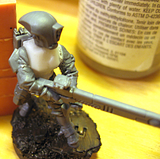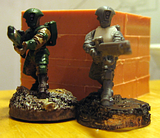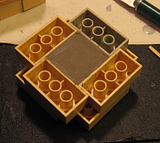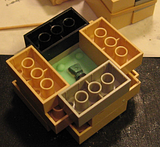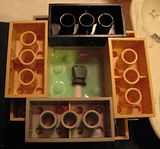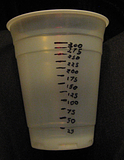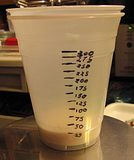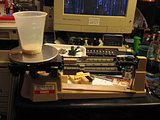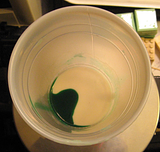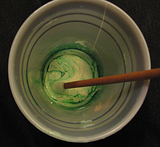
Man procrastination and internet troubles are a pain... This was supposed to be posted Saturday. On Friday, a buddy and I went to a demo for Malifaux our FLGS was hosting. It's definitely an interesting game.

I originally learned about the game on accident while looking at 40k models. The Rasputina box art called me when I'd turned away from the 40k rack. While I was looking at the starters, one of the store workers mentioned to me that they were having a demo for the game on Friday.

I played a crew called Lilith's Brood, which is apparently one of the 'native' daemonkin groups. It had Lilith herself, and 3 'ages' of a creature called a Nephilim. These models are interesting in that in the game they can 'grow up' to their next level. The first of these levels is called a 'Terror Tot' and is the weakest of the 3, the next one is a 'Young Nephilim' and gains a number of abilities over it's younger brethren (including an extra attack and the ability to 'fly' over terrain.) Finally is the 'Mature Nephilim' which has some more special things, but I don't remember the particulars. My crew consisted of Lilith, 2 Terror Tots, a Young Nephilim, and a Mature Nephilim.

My buddy (and as it happened, opponent) played The Redchappel Gang, which was basically the Mad Hatter and his gaggle of undead hookers. His crew was Seamus (the leader), Madame Sybelle, 3 'Rotten Belles', and Copycat Killer.

The first thing I feel should be noted, is while I'd heard that all you need to play is a starter box and a deck of cards each, plus the main rulebook ($35). The Lilith's brood doesn't actually make a legal crew. The starter set comes with Lilith, a Mature Nephilim, and 3 Terror Tots. So if I decided to play this group I'd immediately have to purchase a Young Nephlim blister (which does come with 2 Young Nephlim) to get enough points worth of models for the basic 25 point game. Granted, this brings the start up cost from $34 for the starter, to $50.50 ($34 starter + $16.50 blister). From what I heard on the crew my buddy played, he wouldn't be able to make a legal crew without a blister as well. The Copycat Killer being the model that doesn't come in that crew's starter. Granted, $50 for a playable startup is pretty good for a miniatures game.
Interestingly, Malifaux is a dice-less system. Instead it uses a deck of cards and has the option to 'cheat fate'. Each player has their own 54 card deck (a standard deck + 2 jokers). The numbers on the cards represents the 'roll' the card represents, while the suit represents the card's aspect. The aspect does a number of things from determining if a special ability triggers to playing damage multiplier. They do make their own decks, called fate decks, which make it easier to play as you don't have to remember where damage level cutoffs are, nor do you have to refer to the suit conversion.
Unlike 40k (or Warmachine from what I hear), models are 'activated' individually instead of the entire force at once. Activation involves choosing a model and expending it's actions. In Malifaux, a model has a base 2 'actions' which may be spent doing a number of things, such as moving, attacking, charging, casting a spell, etc. Different activities have a different number of actions they cost. For example, charging costs 2 actions instead of one, but moves further then a single move action, and includes an attack against a model. Any one model may only be activated once each turn. Players trade off activating a single model each until all models have been activated. Then end of turn stuff happens (mainly reshuffling the discard into the active deck). This is a mechanic I really like, and is similar to the one in Rezolution.
All in all it's a pretty interesting game, rules wise. I haven't been able to read up on the fluff of the setting or game, but if the models are any indication, it should be rather interesting in a steamtech meets magic kinda way.
Images from the Wyrd Games site, used without permission.



